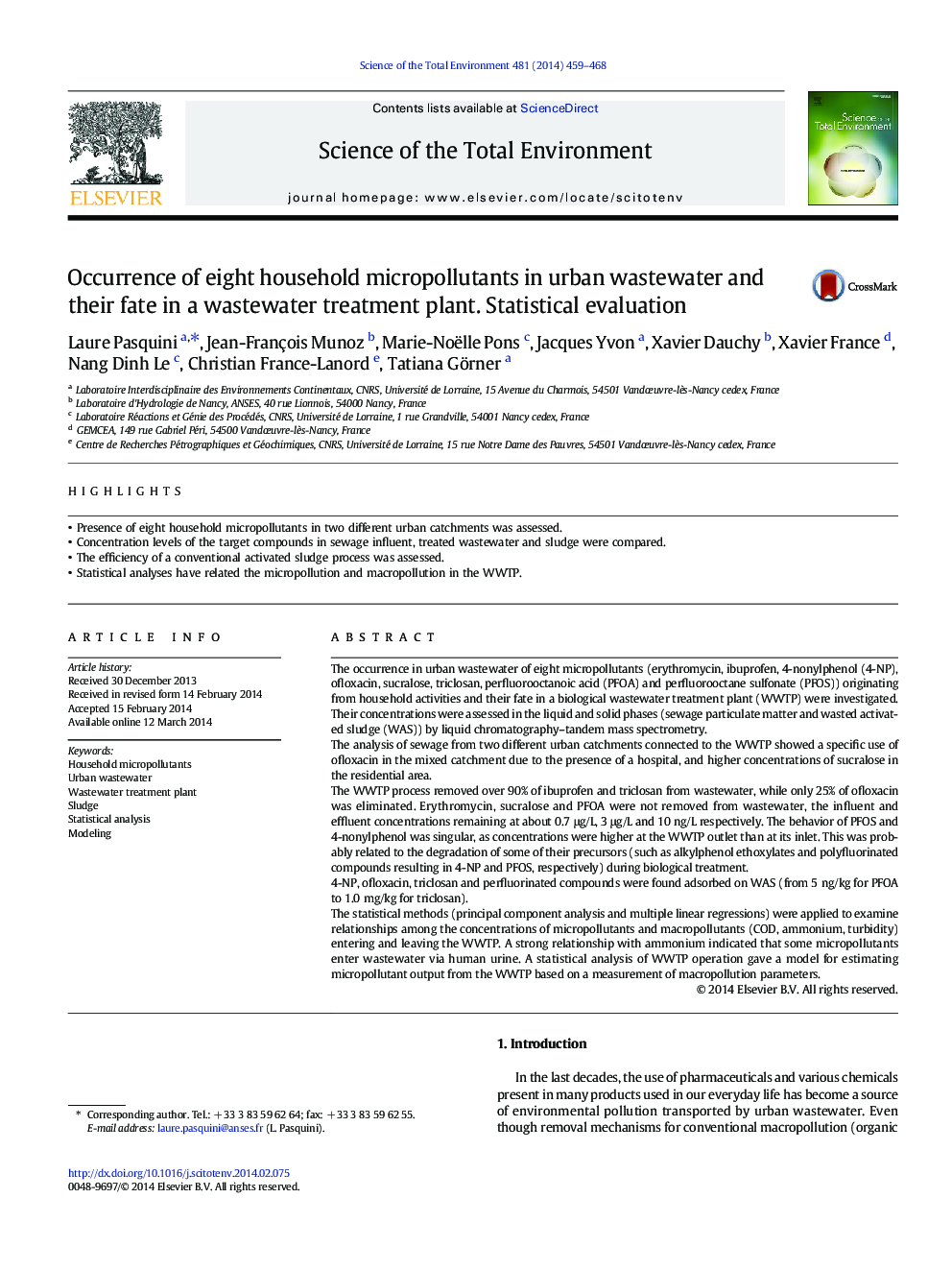| کد مقاله | کد نشریه | سال انتشار | مقاله انگلیسی | نسخه تمام متن |
|---|---|---|---|---|
| 6330882 | 1619786 | 2014 | 10 صفحه PDF | دانلود رایگان |
- Presence of eight household micropollutants in two different urban catchments was assessed.
- Concentration levels of the target compounds in sewage influent, treated wastewater and sludge were compared.
- The efficiency of a conventional activated sludge process was assessed.
- Statistical analyses have related the micropollution and macropollution in the WWTP.
The occurrence in urban wastewater of eight micropollutants (erythromycin, ibuprofen, 4-nonylphenol (4-NP), ofloxacin, sucralose, triclosan, perfluorooctanoic acid (PFOA) and perfluorooctane sulfonate (PFOS)) originating from household activities and their fate in a biological wastewater treatment plant (WWTP) were investigated. Their concentrations were assessed in the liquid and solid phases (sewage particulate matter and wasted activated sludge (WAS)) by liquid chromatography-tandem mass spectrometry.The analysis of sewage from two different urban catchments connected to the WWTP showed a specific use of ofloxacin in the mixed catchment due to the presence of a hospital, and higher concentrations of sucralose in the residential area.The WWTP process removed over 90% of ibuprofen and triclosan from wastewater, while only 25% of ofloxacin was eliminated. Erythromycin, sucralose and PFOA were not removed from wastewater, the influent and effluent concentrations remaining at about 0.7 μg/L, 3 μg/L and 10 ng/L respectively. The behavior of PFOS and 4-nonylphenol was singular, as concentrations were higher at the WWTP outlet than at its inlet. This was probably related to the degradation of some of their precursors (such as alkylphenol ethoxylates and polyfluorinated compounds resulting in 4-NP and PFOS, respectively) during biological treatment.4-NP, ofloxacin, triclosan and perfluorinated compounds were found adsorbed on WAS (from 5 ng/kg for PFOA to 1.0 mg/kg for triclosan).The statistical methods (principal component analysis and multiple linear regressions) were applied to examine relationships among the concentrations of micropollutants and macropollutants (COD, ammonium, turbidity) entering and leaving the WWTP. A strong relationship with ammonium indicated that some micropollutants enter wastewater via human urine. A statistical analysis of WWTP operation gave a model for estimating micropollutant output from the WWTP based on a measurement of macropollution parameters.
Journal: Science of The Total Environment - Volume 481, 15 May 2014, Pages 459-468
